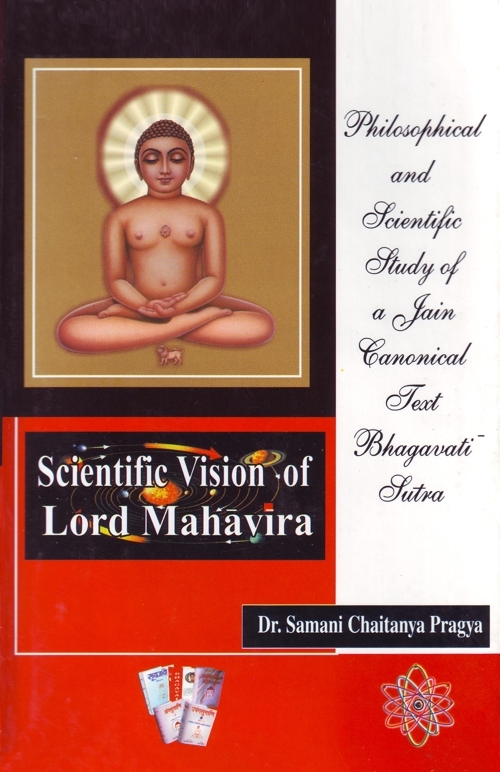An Objective Reality
According to Bh.S, space (Ākāśa) is an independent and objective reality.[3] It is self-content and the container of all other substances. It is boundless and infinite. It is not occapied by any other entities, as they are finite or limited. Like other enteties, space also represents a manifold reality. It means, inspite of being incorporeal, space consists of infinite space-points.[4] According to Abhayadeva and Prabhācandra, even an incorporeal or formless object may contain parts or divisions.[5] Abhayadeva points out further that to be divisible (Sāvayava) does not necessarily mean that the parts should be together at some point of time prior to division.[6] So space has infinite
points which are in a continuum form. In other words, indivisibility is an intrinsic feature of the space points.
According to the Jain view, space is devided into two parts, viz; cosmic and transcosmic.[7] Cosmic space is the part which is occupied by souls and matter and which is co-extensive with the media of motion and rest.[8] The cosmic space is made up of innumerable space-points while, transcosmic of infinite.[9 ]In total, the cosmic and transcosmic together are of infinite spacepoints.
Beyond cosmic space is transcosmic space. It is a receptacle without contents.[10] Truely speaking, cosmic space is a plenum and transcosmic space is a vacuum or empty-space. In it, no other substance exists. Neither an atom of matter nor any living entity can cross the boundary of cosmos and enter into supra cosmos. In fact, space is one and indivisible entity. It is a homogeneous whole.[11] It is not devided into two parts as we see in the case of material object.
The distinction of the cosmic and transcosmic space is only due to the operation of the two cosmic principles, viz; the medium of motion and the medium of rest as discussed before in the second chapter.[12] Actually where these two are, there is the cosmic space. In the absence of the two there is no cosmos at all. The three substances the medium of motion, the medium of rest and the cosmic space, are co-existent and co-extensive.[13] They penetrate each other without offering any sort of resistance. There is one-toone correspondence between the points of the three elements. Sarvārthasiddhi, the commentary on Tattvārtha Sūtra, compares this pervasion of the media in the cosmic space to the pervasion of oil in the sesame seed.[14] This is in contrast to the location of a jar in a particular place in the room.
Thus, space is one and continuum. It is distinguished as cosmos and transcosmos due to the presence or absence of the medium of motion and the medium of rest. Living beings and matter move and rest up to the confines of the universe only. Beyond this the media are absent. It is these two media that determinate the limitation of the universe. The transcosmos is an infinite pure space. There is nothing as living or non-living phenomenon and it surrounds the cosmos from all sides.[15]
According to the Bh.S, space acts as the receptacle of all substances.[16] The points of the medium of motion and the medium of rest coalesce with the points of cosmic space. This coalescence is a kind of mutual co-operation and the condition for mutual existence. In addition to these three, the other two substances i.e. soul and matter, are also housed in cosmic space. It is, therefore, the container of all substance.
 Dr. Samani Chaitanya Pragya
Dr. Samani Chaitanya Pragya

